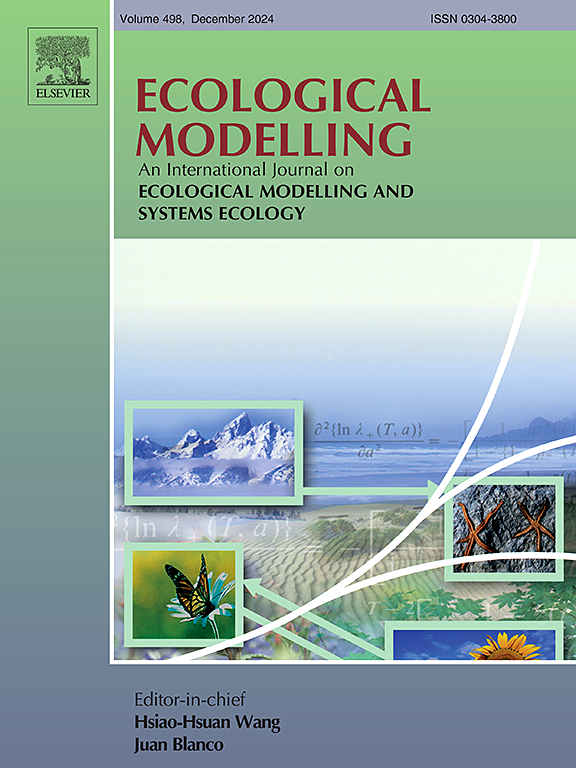On the evolution of dispersal strategies under the costs of acquisition of private and social information
IF 2.6
3区 环境科学与生态学
Q2 ECOLOGY
引用次数: 0
Abstract
Dispersal between patches of suitable habitat is a key behaviour for the survival of animal populations and is impacted by rapid environmental changes. Animals must cope with several costs related to the dispersal process, such as expenses in energy to acquire information or increased mortality risks. There is a growing interest in studying how the costs of acquisition of information influence the dispersal behaviour of species, and particularly how the use of social and private information can shape this behaviour over multiple generations. Current models of dispersal rarely incorporate both sources of information, and there is a specific lack of modelling studies taking into account costs of acquisition for private and social information. We develop an agent-based model that simulates a population of butterflies with genetic factors linked to the acquisition of both types of information and their associated reproductive costs. We show that different costs, environmental variability conditions, and sensory abilities result in various dispersal behaviours and have an impact on the fitness of the population. In stable environments, a varying proportion of agents use low-cost information to disperse, but when the cost increases lightly, all agents remain uninformed. In highly variable environments, the same trend is observed, but agents rely on information even if the cost of acquisition increases up to twice compared to stable environments, as it provides an evolutionary advantage. Agents with a limited perceptual range use both information sources equally in variable environments, and those with a bigger perceptual range rely exclusively on private information to make dispersal decisions, except at free cost of acquisition. Globally, the use of information induces a higher fitness for the population in stable environments if the costs of acquisition are free or very low. In variable environmental conditions, the highest fitness is maintained with a limited perceptual range when the total cost rises to twice the value found for stable environments. With a bigger perceptual range, the highest fitness is maintained for the whole range of total costs studied.
求助全文
约1分钟内获得全文
求助全文
来源期刊

Ecological Modelling
环境科学-生态学
CiteScore
5.60
自引率
6.50%
发文量
259
审稿时长
69 days
期刊介绍:
The journal is concerned with the use of mathematical models and systems analysis for the description of ecological processes and for the sustainable management of resources. Human activity and well-being are dependent on and integrated with the functioning of ecosystems and the services they provide. We aim to understand these basic ecosystem functions using mathematical and conceptual modelling, systems analysis, thermodynamics, computer simulations, and ecological theory. This leads to a preference for process-based models embedded in theory with explicit causative agents as opposed to strictly statistical or correlative descriptions. These modelling methods can be applied to a wide spectrum of issues ranging from basic ecology to human ecology to socio-ecological systems. The journal welcomes research articles, short communications, review articles, letters to the editor, book reviews, and other communications. The journal also supports the activities of the [International Society of Ecological Modelling (ISEM)](http://www.isemna.org/).
 求助内容:
求助内容: 应助结果提醒方式:
应助结果提醒方式:


